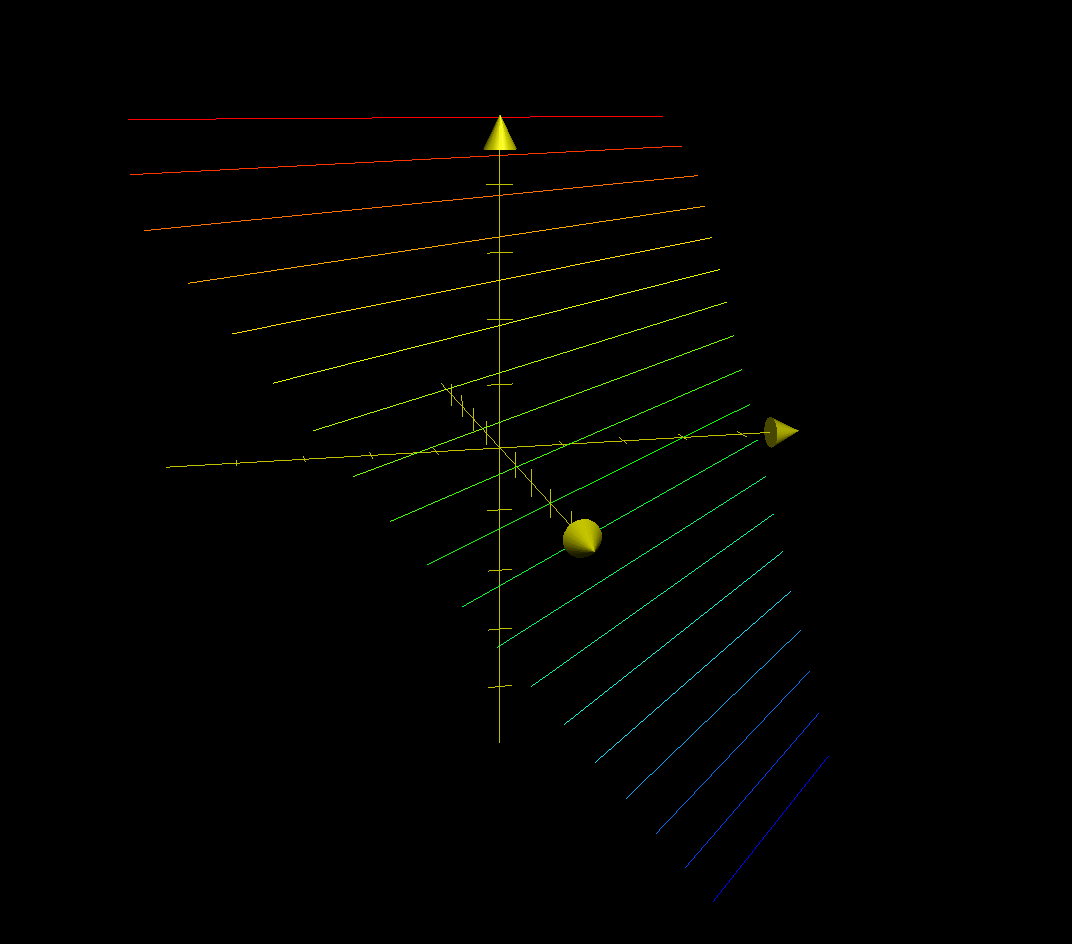Day 5: Fixing Santa's Sleigh
In anticipation of Santa's upcoming journey around the world, a team of elves are working to repair his sleigh. Upon inspection of their notes from the previous year, they recalled that on a few instances, Santa's sleigh almost slid off of many snowy roofs on which he landed, due to his sleigh being much too slippery! They decide to fix this issue by installing hydraulic brakes! As they experiment with different shapes of pipes and different fluids, the elves find something interesting. When they release a large bubble of air into a continuous medium of water, the water flow seems to follow of the flow field F = 3 x i + 3 y j + 2 z k outwards from the bubble. Near the bubble, they place the frame for a pipe. The elves want to test this mechanism against some of their other models, so they predict how this system will behave mathematically. If the bubble is a point lying on the origin, and the pipe frame is a triangular surface bounded by the ( x , y , z ) coordinates ( 3 , 0 , 0 ) , ( 0 , 3 , 0 ) , and ( 0 , 0 , 4 ) . What is the rate of change of the fluid exiting through the pipe frame?
This question was inspired by this problem .
This problem is part of The 12 Days of Math-Mas 2018
The answer is 48.
This section requires Javascript.
You are seeing this because something didn't load right. We suggest you, (a) try
refreshing the page, (b) enabling javascript if it is disabled on your browser and,
finally, (c)
loading the
non-javascript version of this page
. We're sorry about the hassle.
2 solutions
Haha - Glad you enjoyed the problem, I was actually inspired to make a flux integral problem after seeing Otto's problem earlier today. I forgot how fun they were to solve! :)
We are given that F = ⎣ ⎡ 3 x 3 y 2 z ⎦ ⎤ and a surface that is given by the equation 3 z + 4 y + 4 x = 1 2 . We know that we are solving an integral of the form:
∫ ∫ C F ⋅ ∇ f dA
This is because for some flux integral, we multiply ( ∣ ∣ ∇ f ∣ ∣ ) ∣ ∣ ∇ f ∣ ∣ ∇ f = ∇ f . We know that f is going to be some function where f = z − g ( x , y ) . We get that f = z − 4 + 3 4 y + 3 4 x . By computing the gradient, we get ∇ f = ⎣ ⎡ 3 4 3 4 1 ⎦ ⎤ . We can then compute the dot product:
∫ ∫ C ⎣ ⎡ 3 x 3 y 2 z ⎦ ⎤ ⋅ ⎣ ⎡ 3 4 3 4 1 ⎦ ⎤ dA ⇒ ∫ ∫ C 4 x + 4 y + 2 y dA
We can substitute z = g ( x , y ) back into the integral to get:
∫ ∫ C 4 x + 4 y + 2 ( 4 − 3 4 y − 3 4 x ) dA ⇒ ∫ ∫ C 4 x + 4 y + 8 − 3 8 y − 3 8 x dA
We now must define the region of C . We will say that C lies on the x − y coordinate plane, with z = 0 . The graph of the pipe's surface looks somewhat like this:

The surface intersects the x -axis at 3 and the y -axis at 3 as well. This means that to define C we can vary x between 0 and 3 , and we can vary y between 0 and − x + 3 , since the region is bounded by the x -axis, the y -axis, and the line with the equation y = 3 − x . Setting up this integral:
∫ 0 3 ∫ 0 3 − x 4 x + 4 y + 8 − 3 8 y − 3 8 x dy dx
We can now simply evaluate this integral fairly easily, and get the value of 4 8 .
Recall the divergence theorem:
∫ ∫ S F ⋅ d S = ∫ ∫ ∫ V ∇ ⋅ F d V
We want to find the left side (the flux). Conveniently, the divergence is a constant:
∇ ⋅ F = ∂ x ∂ ( 3 x ) + ∂ y ∂ ( 3 y ) + ∂ z ∂ ( 2 z ) = 3 + 3 + 2 = 8
Put eight of the specified triangles together to form a closed surface, whose volume is that of two combined square pyramids (one upright and one inverted) of base side length 3 2 and height 4 . The volume of this combined shape is 4 8 . Integrating the divergence over the volume therefore yields:
∫ ∫ ∫ V ∇ ⋅ F d V = 8 ∫ ∫ ∫ V d V = 8 × 4 8
Due to symmetry, the flux over one of the eight sides (the original triangle) is therefore equal to 4 8 .
Post-script: After messing up a similar problem by @Otto Bretscher today due to some silly mistakes, I'm glad to have been given a second chance :)